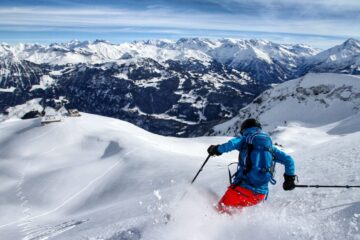The new binding from Swiss manufacturer Fritschi has been hailed as a breakthrough in ski-touring bindings. It uses a pin system similar to that of Dynafit bindings to retain the toe and heel of your ski boot in the binding, but unlike the Dynafit binding it has the ability to set the release force for the toe pins (Dynafit does not offer a “DIN” type adjustment on the toes). For anyone who uses Dynafit bindings it is often the case that the binding releases far too easily with the release tab in the horizontal position but it won’t release in the event of injury when the release tab is pulled up (as in climbing mode). With the new Vipec binding you can adjust the release force required for both the toe and heel and the binding will even release in walk mode in an emergency. With this in mind I recently swapped out my Marker Barons for the new Fritschi Vipec. I have a set of Dynafit bindings on another set of skis and was going to change the Barons for another set of Dynafits until I saw the Vipec and decided to purchase this instead.
 |
| The Fritschi Vipec mounted. |
First Impressions
At first look the Vipec looks like a larger and plastic Dynafit. Both the heel and toe units are quite a bit larger than the Dynafit, despite this the Vipecs weight is similar to that of the equivalent Dynafit binding and substantially lighter than most frame binding on the market these days. The plastic finish of the Vipec looks slightly cheaper than the more machined metal finish of the Dynafit but that is a very subjective opinion.
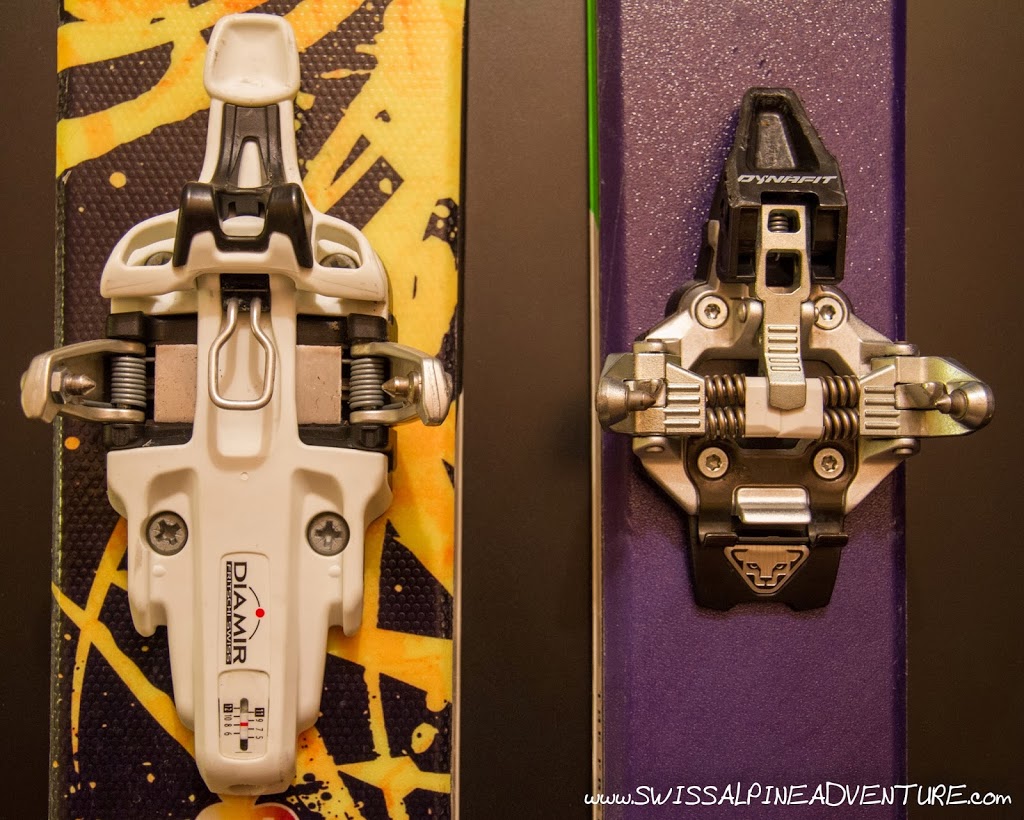 |
| The toe unit of the Vipec (left) and Dynafit (right) |
Clicking In
First time clicking was noticeably more difficult for me than with my Dynafit bindings. The “Side Towers” which Dynafit pin bindings have are not present on the Vipec and it takes a lot more time to line up and click in. With time clicking in has become slightly easier, but when I went back to use my Dynafit Bindings after a month of using the Vipecs I found it almost a relief how easy it was to click into the Dynafits.
There is a lever on the front of the binding similar to that on Dynafit Bindings which can be lifted up to put the ski into “walk” mode. This stiffens the release mechanism further to reduce the reduce the risk of losing a ski when climbing, but it should still release in the event of a bad fall or an avalanche.
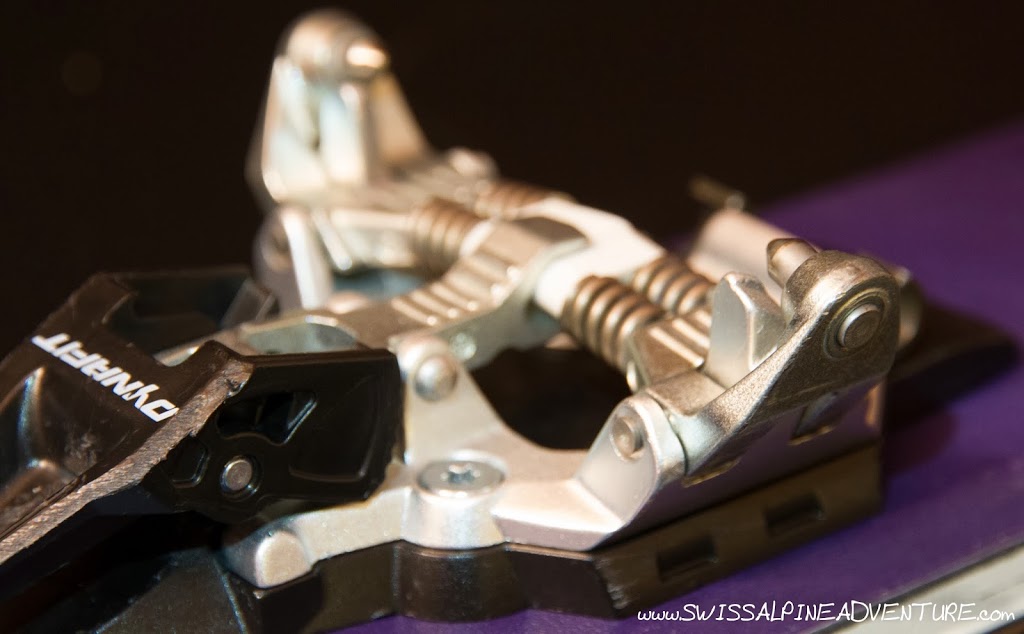 |
| The “side towers” (just below and left of the pin) on the Dynafit bindings make clicking in considerably easier than on the Vipec. |
The Heel Unit
The heel unit is considerably more sizeable than most of the Dynafit heel units. Instead of rotating to put it into walk mode the Vipec heel slides backwards on a track to ensure that the heel pins do not engage in your boot. For the most part this system seems to work, but I have had a few occasions when climbing where there it felt like something came in contact with the boot and I experienced some resistance when lifting the heel. This was somewhat annoying but only seemed to occur when there was extra ice build-up around the binding and the skintrack was uneven causing the ski to flex as I weighted it.
One advantage of the heel unit on the Vipec is that it can be opened with your ski pole meaning you can go into walk mode without having to remove the ski which can be nice to cross longer flat areas where you don’t really need to put the skins back on. The climbing aids are plastic and can relatively easily be put on and taken off with your ski pole.
On a few occasions I’ve had some snow build up on the track the heel unit runs on and when returning the heel from walk to ski mode it hasn’t quite returned fully (even though everything did appear to be in the correct place before starting skiing). Due to this I have a few times inadvertently ended up Telemarking when descending due to the heel of my boot accidentally coming loose.
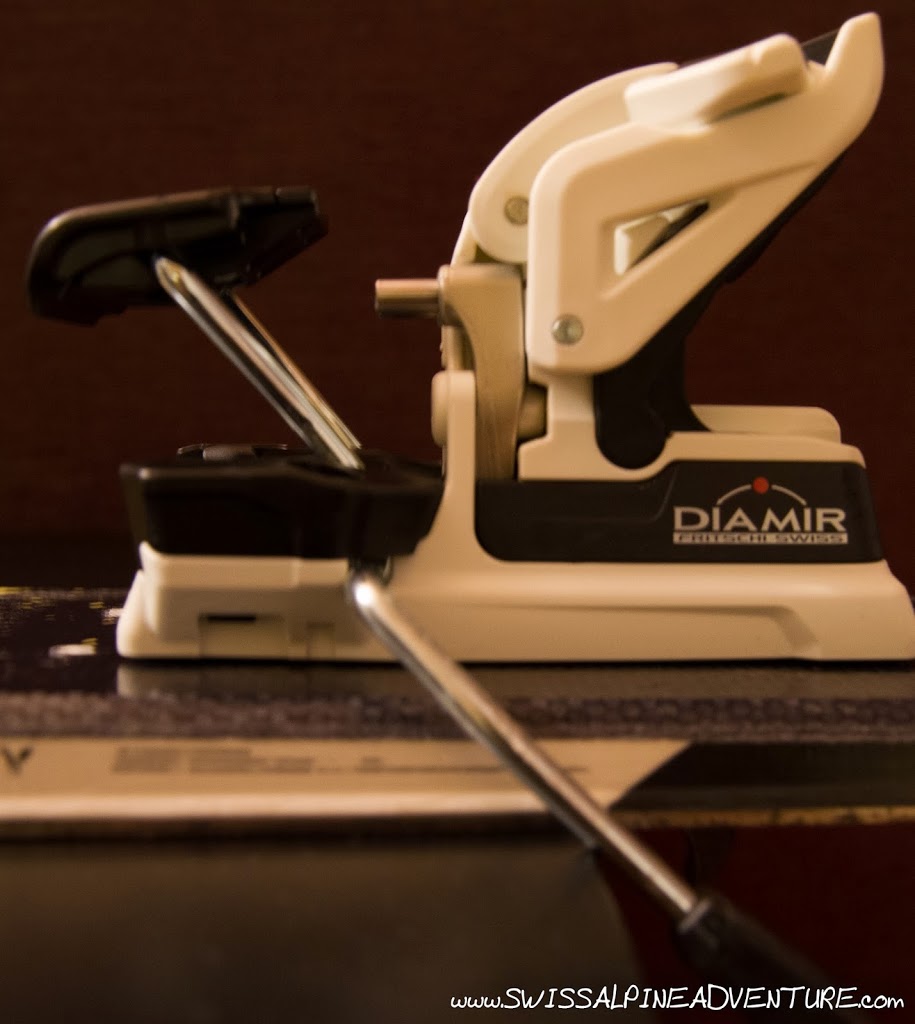 |
| The stoppers need to be retracted by hand to slide the heel unit back when changing to walk mode. |
Getting Out
Getting out of the binding is one of the areas where the Vipec lets itself down the most. With a Dynafit binding pressing the lever in front of the toes retracts both pins very cleanly and it is quite easy then to step out of the ski. With the Vipec I have found that the pins very often didn’t retract or only retracted fully on one side which meant it was very difficult to get out of the binding. On a number of occasions I’ve found myself pressing the release lever and trying to awkwardly move my toes sideways to force the release of the pins. This was rather annoying. After about 5 or 6 days skiing on the binding the release mechanism seemed to loosen up a bit and getting out of the ski became easier. After a month of using these bindings it is still not a completely clean release.
Releasing
As already mentioned when discussing the heel unit I’ve had the heel inadvertently and unexpectedly release a couple of times. This was most likely due to the heel unit not returning fully when going from walk to ski mode. I’ve had one accidental release of the toe unit when trying to to dig the ski laterally into the mountain to make myself a safe platform in steep terrain. I’ve done this in the past with frame bindings (at similar DIN settings) and never had a ski release. This release was slightly unnerving and luckily it didn’t occur in terrain with consequences. I’ve had only two falls where I would expect the ski to release in a month of using these skis and in these cases they did.
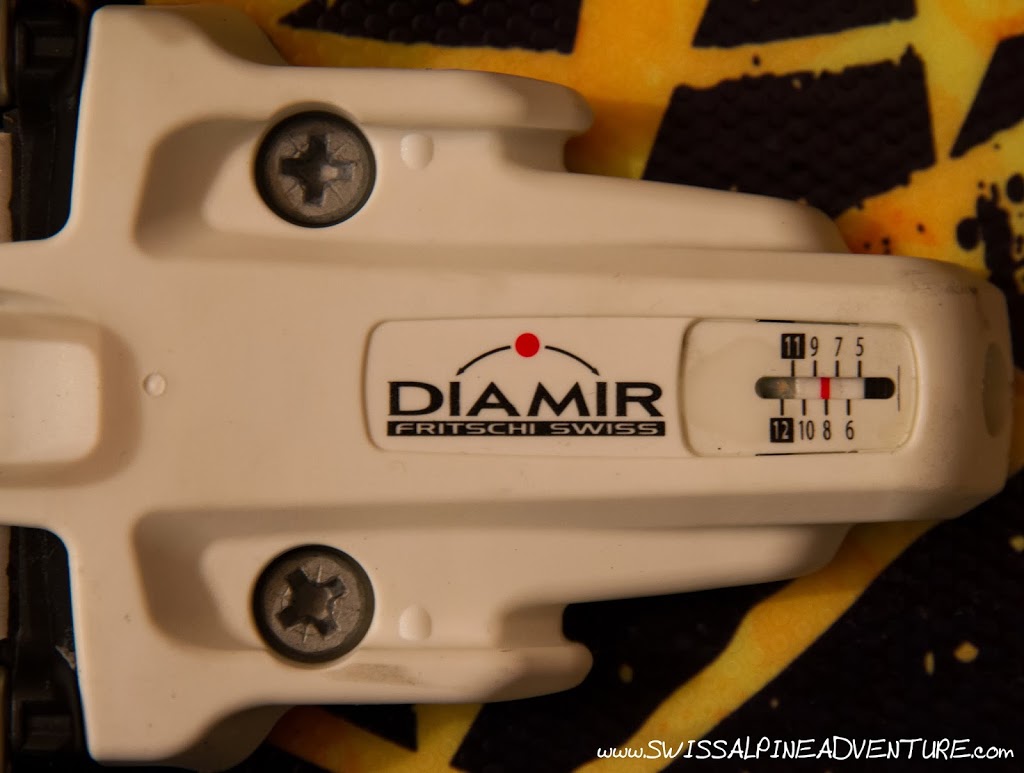 |
| Din gauge on the toe unit. This is adjustable through the hole just visible on the far right of the picture. |
Skiing
I noticed no problems when skiing the binding. It skied for the most part very similar to Dynafit bindings apart from (as mentioned above) the heel releasing inadvertently on a couple of occasions. I couldn’t detect any slop or problems with the boot binding interface when skiing normally.
Walking
The binding is noticeably lighter when walking than the frame binding (Marker Baron) which I had previously had on these skis. The rotation of the foot is similar to that of Dynafit bindings and in my opinion is somewhat more comfortable than with a more raised frame binding.
Problems
After a month of use I noticed the adjustable pin had worked it’s way loose on one of the bindings. I gently tightened this up being careful not to over-tighten it and strip the threads and constantly checked it for the rest of the day to ensure it didn’t work loose again. Unfortunately the screw threads on the pin did strip which left the pin in a position that it would fall out if the toe unit released. This is quite disappointing in a one month old binding and could have potentially caused me some problems if I had lost the pin while skiing. I will now be returning the binding to the shop where I bought it and see how good Fritschi’s after-sales service is.
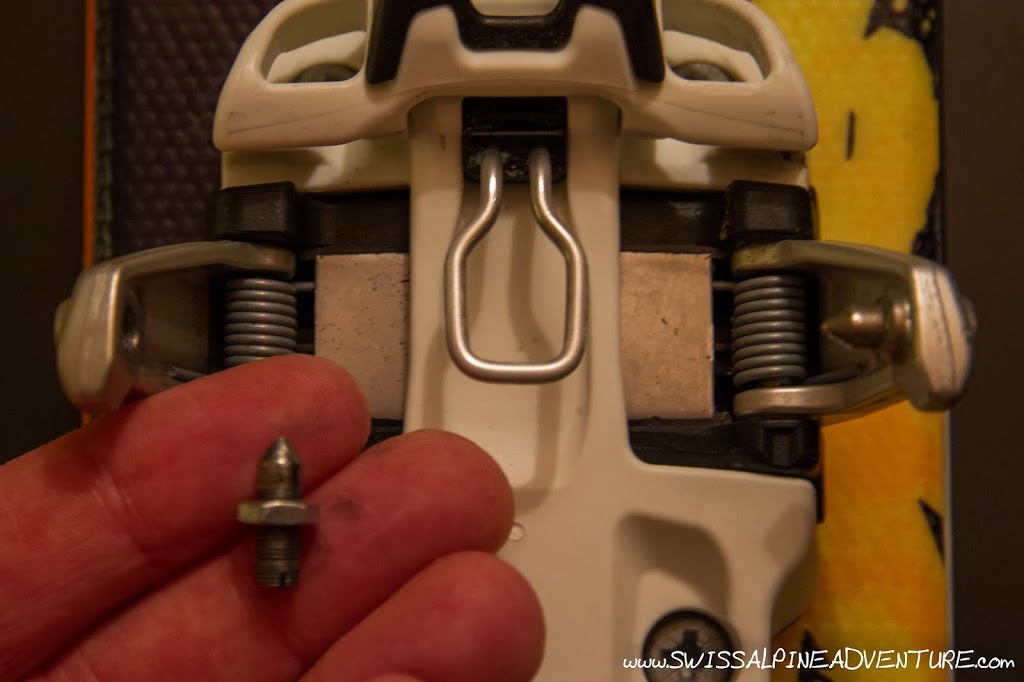 |
| The adjustable pin after being stripped from the binding. |
Conclusion
After a month of skiing the Vipec (10-12 days skiing) for both touring and freeriding in very mixed conditions I think that Fritschi are onto a good thing with the concept. The binding is a breakthrough providing the advantages of the Dynafit pin system and a conventional frame binding. The binding does work but unfortunately the execution is not yet anywhere near as smooth as that of the other systems currently on the market. In my opinion the Vipec needs to be further refined to make it achieve it’s full potential and be a real challenger to Dynafit. I don’t regret having bought the binding and I think that with some refinement the system will be the future of touring bindings. Without feedback this won’t be the case and I do hope that the system does achieve the level of refinement that it deserves.
Update Dec 2014
Fritschi have updated the binding for season 2014/2015. The pins are now 1mm thicker at the thread to provide more stability and one of them is threaded in reverse to prevent it from loosening while walking. They have also added guides to make stepping in easier and used a stronger spring to make releasing the binding easier. I am currently testing the updated version and will provide feedback in time as to whether these changes have improved the binding or not.
